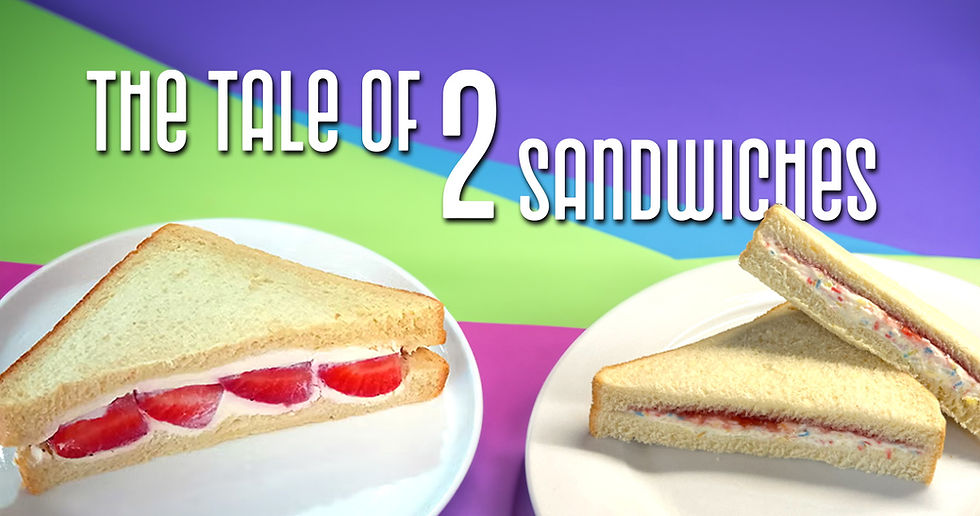5 Steps to Validate Your Food Product Idea Before Investing
- Rhys Bennett
- Feb 24
- 4 min read

So, you've got a brilliant idea for the next big food sensation? That's fantastic! But before you pour your heart, soul, and savings into production, it's crucial to validate your concept. A great idea is only the starting point; turning it into a successful product requires careful planning and market research. Think of it as building a house – you wouldn't start construction without a solid blueprint, right? This blog post will guide you through five essential steps to validate your food product idea and increase your chances of success.
1. Define Your Target Audience (and Get to Know Them Really Well):
Who are you trying to reach with your product? This isn't just about demographics (age, location, income). It's about understanding their lifestyle, eating habits, values, and pain points. Are they health-conscious millennials? Busy parents looking for quick meals? Foodies seeking adventurous flavors? The more specific you can be, the better. Once you've identified your target audience, go where they are. Engage in online communities, read reviews of similar products, and even conduct surveys or focus groups. Understanding your audience is the foundation of successful product development.
Market research is key here. Look at existing market reports for your product category. Analyse competitor data (sales, pricing, marketing strategies). Use online tools like Google Trends to see if there's growing interest in your product category. Don't just assume you know your target audience; prove it with data.
2. Develop a Compelling Value Proposition (Why Should They Care?):
What makes your product unique? Why should consumers choose it over the dozens of other options on the shelves? Your value proposition is the core message that communicates the benefits of your product to your target audience. Is it healthier? More convenient? More sustainable? Does it offer a unique flavor profile? Does it solve a specific problem? Clearly articulating your value proposition is essential for attracting customers and standing out in a crowded market.
A strong value proposition focuses on the customer's needs and how your product fulfills them. Use the "jobs to be done" framework to understand the "job" your customer is hiring your product to do. For example, are they "hiring" your product to save time, eat healthier, or impress guests? The clearer you are about the job, the better you can tailor your value proposition.
3. Test Your Product (and Be Open to Feedback – Even the Critical Stuff):
This is where the rubber meets the road. You've got a great idea and a compelling value proposition, but does your product actually deliver? Conduct thorough product testing with your target audience. Get feedback on taste, texture, appearance, packaging, and overall appeal. Be open to constructive criticism – it's invaluable for refining your product. Don't just ask if people like your product; ask why they like it (or don't).
Consider different types of product testing: blind taste tests to eliminate brand bias, in-home use tests to see how the product performs in real-life situations, and focus groups to gather qualitative feedback. Use statistically significant sample sizes to ensure your results are reliable.
4. Analyse the Competitive Landscape (Know Your Rivals):
Who are your competitors? What are their strengths and weaknesses? Understanding the competitive landscape is crucial for developing a successful product strategy. Analyse their pricing, marketing, distribution channels, and product offerings. Identify opportunities to differentiate your product and carve out your own niche in the market. Don't just copy what others are doing; find your own unique angle.
Conduct a competitive analysis using tools like SWOT analysis (Strengths, Weaknesses, Opportunities, Threats) to assess your position in the market. Look at market share data to understand the relative size of different players. Analyse online reviews and social media mentions to gauge consumer sentiment towards your competitors.
5. Develop a Go-to-Market Strategy (How Will You Reach Your Customers?):
How will you get your product into the hands (and mouths!) of your target audience? Your go-to-market strategy outlines your plan for launching and scaling your product. This includes decisions about distribution channels (retail stores, online marketplaces, direct-to-consumer), marketing and advertising, pricing, and sales. A well-defined go-to-market strategy is essential for a successful product launch.
Consider your target audience's buying habits. Where do they typically shop for similar products? What marketing channels are most effective for reaching them? Develop a detailed marketing plan that includes specific tactics and timelines. Calculate your cost of goods sold (COGS) and determine a pricing strategy that is both profitable and competitive.
Validating your food product idea is an essential step in the product development process. By following these five steps, you can increase your chances of success and avoid costly mistakes. Remember, a great idea is just the beginning. Thorough planning, market research, and product testing are crucial for turning your vision into a reality. So, take the time to validate your concept, and you'll be well on your way to creating the next big food sensation! What validation steps do you find most helpful? Share your experiences in the comments!



